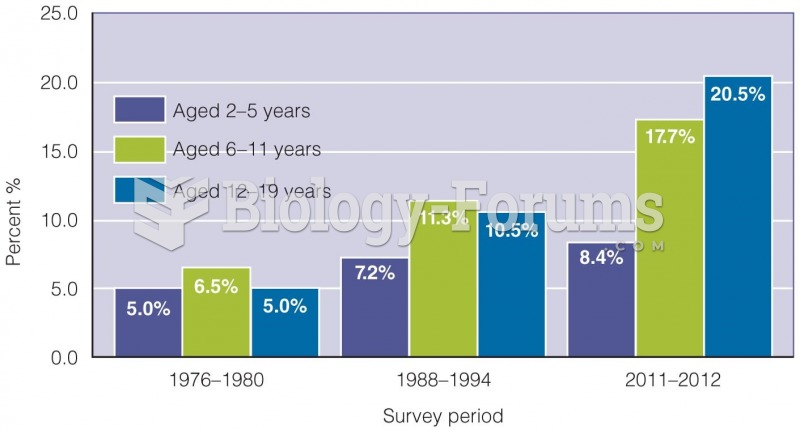|
|
|
Only 12 hours after an egg cell is fertilized by a sperm cell, the egg cell starts to divide. As it continues to divide, it moves along the fallopian tube toward the uterus at about 1 inch per day.
A seasonal flu vaccine is the best way to reduce the chances you will get seasonal influenza and spread it to others.
Prostaglandins were first isolated from human semen in Sweden in the 1930s. They were so named because the researcher thought that they came from the prostate gland. In fact, prostaglandins exist and are synthesized in almost every cell of the body.
Approximately one in three babies in the United States is now delivered by cesarean section. The number of cesarean sections in the United States has risen 46% since 1996.
On average, the stomach produces 2 L of hydrochloric acid per day.
 Everyday situations sometimes present opportunities for children to build information processing ...
Everyday situations sometimes present opportunities for children to build information processing ...
 Men and women report having fewer days with stressors as they go from middle to older adulthood, and ...
Men and women report having fewer days with stressors as they go from middle to older adulthood, and ...





